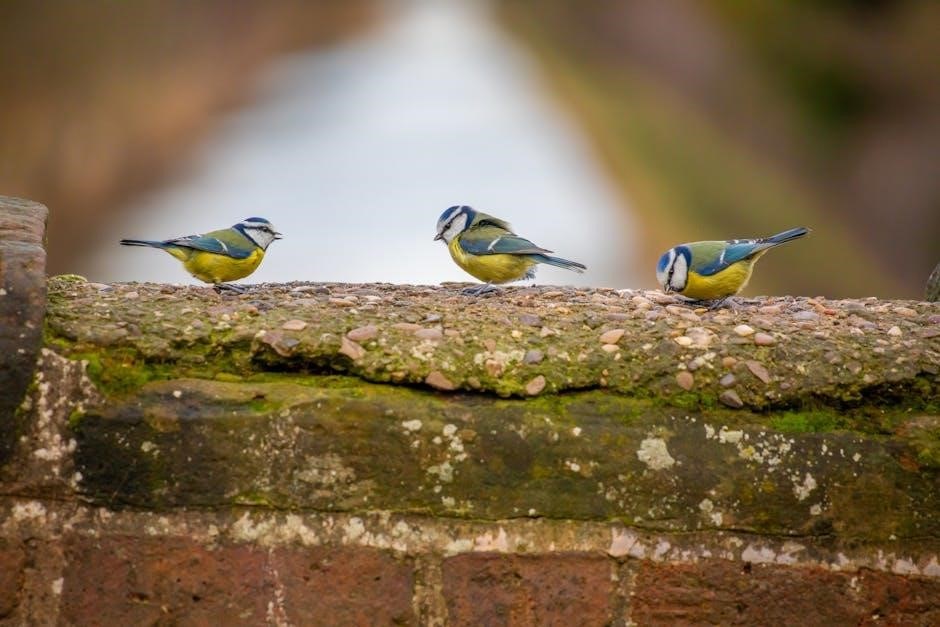This guide offers complete information about your corn snake’s dietary needs․
It is tailored to ensure your pet receives optimal nutrition at every life stage,
from a tiny hatchling to an adult․
Understanding the natural diet of corn snakes is crucial for responsible pet ownership․
These carnivores primarily consume whole animal prey to meet their nutritional needs․
In the wild, their diet includes rodents, birds, and bats, but in captivity, mice are the
staple food․ Providing a balanced diet that mimics their natural food sources is essential
for their health and well-being․ This guide will delve into the specifics of what, when, and
how to feed your corn snake, ensuring they thrive in their captive environment․ Proper
feeding practices are vital for preventing obesity and other health issues․
Appropriate Prey Size
Selecting the correct prey size is paramount for a corn snake’s health and safety․
The prey should be appropriately sized to prevent regurgitation and ensure easy digestion, supporting your snake’s growth․
Determining Prey Size Based on Snake’s Girth
When selecting prey for your corn snake, ensure the rodent’s width is no more than 1․5 times the snake’s girth at its widest point․
This rule helps to prevent the risk of regurgitation and ensures successful digestion․
Ideally, the prey should also be around 10% of the snake’s body weight․
Observing these guidelines ensures that your corn snake can comfortably consume and digest its meal․
Appropriately sized prey will allow the snake to thrive without unnecessary health risks․

Feeding Frequency
Feeding frequency varies depending on age․
Baby snakes need feeding every 5-7 days․
Adult snakes can be fed every 7-14 days, adjusting portion sizes as they grow to maintain a healthy weight․
Hatchling and Juvenile Feeding Schedules
Hatchling corn snakes have a higher metabolism and require more frequent feeding․
Offer a pinky mouse every 5-7 days․
As juveniles, typically between six to twelve months, increase the prey size to fuzzy mice and maintain a feeding schedule of once every 7 days․
Observe your snake’s body condition and adjust the frequency as necessary․
Ensure the prey size is appropriate, no more than 1;5 times the snake’s width at its widest point, to prevent regurgitation and ensure proper digestion․
Always monitor feeding response and adjust as needed for optimal growth․
Adult Corn Snake Feeding Schedules
Adult corn snakes, generally over two years old, have slower metabolisms and can be fed less frequently․
Offer an appropriately sized adult mouse every 7-10 days․
Adjust the feeding schedule based on the snake’s body condition; a slight bulge after feeding is normal, but consistent obesity should be addressed․
Overfeeding can lead to health issues, so monitor weight and reduce frequency if needed․
Some keepers vary the diet with occasional chicks or appropriately sized rats, but mice should remain the staple․
Always ensure the prey is fully thawed and appropriately sized․
Types of Food for Corn Snakes
Corn snakes thrive on a carnivorous diet․
Mice are the standard food․
Variety can include chicks and rats․
Frozen prey must be properly thawed․
Ensure safety and nutritional balance for a healthy snake․
Mice as the Staple Diet
Mice serve as the cornerstone of a corn snake’s diet, providing essential nutrients for growth and vitality․
Available in various sizes, from pinkies for hatchlings to adults for mature snakes, mice meet their nutritional needs․
Frozen mice, readily accessible at pet stores, offer a safe and convenient feeding solution․
Ensure the mice are appropriately sized, roughly 1․5 times the snake’s girth, to prevent regurgitation or feeding issues․
Selecting mice as the primary food source guarantees a balanced diet, promoting optimal health and longevity for your corn snake․
Variety in Diet: Rats, Chicks, and Other Options
While mice are the staple, introducing variety can enrich your corn snake’s diet and stimulate their natural hunting instincts․
Small rats, day-old chicks, or even quail chicks can occasionally supplement their meals, providing diverse nutrients․
Some keepers offer human-grade fish like salmon or trout as treats, ensuring they’re safe and appropriately sized․
Always source alternative prey from reputable suppliers to minimize the risk of parasites or diseases․
Remember, variety should complement, not replace, the core mouse-based diet, ensuring a balanced nutritional intake for your corn snake․

Feeding Frozen vs․ Live Prey
Choosing between frozen and live prey is crucial for your corn snake’s safety․
Frozen prey eliminates parasite risks, while live prey can pose danger to your
snake․
Safety Concerns with Live Prey
Feeding live prey to corn snakes carries significant risks․ Live rodents can inflict
serious injuries on snakes, leading to infections or even death․ Bites, scratches,
and stress from a live animal can harm your corn snake․ Additionally, live prey
may carry parasites or diseases that can be transmitted to your snake․ It’s always
safest to opt for frozen-thawed prey, ensuring a risk-free meal․ Choosing frozen
prey protects your pet from potential harm;
Proper Thawing Techniques for Frozen Prey
Thawing frozen prey correctly is crucial for your corn snake’s health․ Never use a
microwave, as this can cook the prey unevenly․ Instead, thaw prey in the
refrigerator overnight or place it in a sealed plastic bag in cool water for a few
hours․ Ensure the prey is completely thawed before feeding․ Use tongs to offer
the prey, avoiding direct contact․ The prey should be slightly warmer than room
temperature․ Never refreeze thawed prey․ Proper thawing ensures your snake
receives a safe and nutritious meal․
Addressing Feeding Problems
Addressing feeding problems in corn snakes is essential․ Understanding common
issues, like hunger strikes or refusal, is crucial․ Identifying causes helps in
implementing the right solutions for your snake․
Dealing with Hunger Strikes
Hunger strikes in corn snakes, while distressing, often have manageable causes․
Ensure proper temperature and humidity levels․ Try offering a variety of prey
items, such as mice, rats, or chicks, to pique their interest․ Sometimes a
simple change in the environment can make a difference․ Patience is key; avoid
force-feeding unless absolutely necessary․ Consult a reptile veterinarian for
persistent issues, as internal problems may be the cause․ Record feeding
attempts and environmental conditions to track patterns and identify potential
triggers for the hunger strike․
Reasons for Food Refusal
Corn snakes may refuse food due to several factors․ Improper temperature or
humidity can suppress appetite․ Shedding season often leads to temporary
refusal․ Stress from handling or enclosure changes can also deter feeding․
Underlying health issues, like parasites, may cause a loss of appetite․ The
size or type of prey offered might not be suitable; Some snakes are simply
picky eaters․ Ensure enclosure conditions are optimal, minimize stress, and
consider a vet check․ Try warming the prey item slightly to enhance its scent
and stimulate the snake’s feeding response․

Preventing Obesity
Maintaining a healthy weight is crucial for corn snakes․ Obesity can lead to
health problems․ Therefore, portion control and a balanced diet are vital
for your snake’s well-being and longevity․
Portion Control and Balanced Diet
To prevent obesity in corn snakes, portion control is essential․ Offer prey
items that are appropriately sized for your snake’s girth․ Avoid overfeeding
by sticking to a consistent feeding schedule, typically once every 1-2 weeks
for adults, and more frequently for juveniles․ A balanced diet of rodents,
such as mice and rats, provides the necessary nutrients․ While variety can
be offered, mice should be a staple․ Weigh your snake regularly to monitor
its weight and adjust portions as needed, ensuring a healthy body condition․

Water Requirements
Corn snakes, despite their low humidity needs, require constant access to fresh water․
Daily water changes in a clean bowl are important for their health and hydration․
Importance of Fresh Water
While corn snakes are known for not relying heavily on humidity, maintaining a supply of fresh, clean water is paramount for their well-being․
Daily changes of water in a clean bowl are crucial to ensure your corn snake stays properly hydrated․
Clean water prevents the buildup of bacteria and algae, which can lead to health issues․
Hydration is key for proper shedding, digestion, and overall bodily functions in corn snakes․
A consistent supply of fresh water contributes significantly to the snake’s health․